#or in ds9's case: space station
Explore tagged Tumblr posts
Text
There's a question that I think lies at the heart of nearly every character on Deep Space Nine: who am I and where do I belong?
In Star Trek terms it's not a question that's unique to DS9 - TOS asks it of Spock, TNG asks it of Worf and Data, in both cases very effectively. But where DS9 differs is that, with the loveable exception of Miles O'Brien, it's something that every main character grapples with at some point, and usually in depth.
At the start of the series, Sisko thinks he knows who he is (normal human) and where he belongs (Earth, ultimately), but he discovers he's wrong about both of those things.
Bashir hides who he is, and his belonging in Starfleet, the only home he has, is fragile and threatened.
Worf's sense of who he is as a Klingon adopted by human parents is a key theme of TNG; his arc on DS9 is in part about finding a way to belong to both parts of his background.
Kira seems like she has a very strong sense of who she is and where she belongs, but 'Second Skin' throws all that into doubt. (Never mind the part of her identity that is "fighter of Cardassians").
Odo doesn't even know what his species is at the start of DS9. Even by the end of the series, the question of whether he belongs on the station or with the Changelings is an open one.
Jadzia Dax is more certain of who she is and where she belongs, but her nature as a joined Trill inherently raises questions of identity and belonging.
Ezri Dax, unprepared for joining, sometimes has literally no idea who she is when she's first introduced.
Garak knows who he is (a Cardassian) and where he belongs (Cardassia). But you could hardly describe either answer as straightforward.
Quark believes himself to be a traditional Ferengi through-and-through, and desperately tries to cling on to that belief despite all evidence to the contrary.
Nog breaks away from what's expected of him based on who he is, in order to find where he belongs.
Jake does the same, albeit with an easier journey.
Rom believes himself to be of little worth and that with his lack of business sense he could never really belong on Ferenginar, and he learns that he's wrong about both of those things.
The same question even plays out with minor characters - Eddington, Ziyal, Damar, Weyoun 6.
For me, I think this is a significant part of what makes DS9 such a rich series, and what makes its characters so interesting. None of them are static because in almost all cases their identities are actively being challenged and changed as the series goes on. And all of this intersects with DS9's themes of colonialism, migration, and cultural assimilation in fascinating ways.
68 notes
·
View notes
Text
More things I think would happen if Jeeves and Wooster were on DS9
Part 1 Part 1.5
It's a bit harder in space than in London for Bertie's relatives and school friends to track him down and beg for favors. Unfortunately, Jeeves’s reputation as a problem-solver has spread around the station, and the problems Bertie's NEW friends bring to him are even more ridiculous.
Week after week: "Help, I got Zanthi fever at the Gratitude Festival and now my fiancée won't speak to me"—"I love a girl from a few star systems over, but on her homeworld unmarried men and women are only allowed to communicate via each other's same-gender parent and her mom hates me"—"Your Uncle Tom wants a rare silver thing but this asshole Ferengi trader won't let him have it" (sometimes his relatives DO visit)
When he doesn’t end up with dubiously legal, stolen, or dangerous alien merchandise smuggled aboard his ship against his will (and also when he does), he keeps managing to stumble coincidentally into the exact combination of words and actions that make up some alien culture's courtship ritual (nobody told him that on Glorgon, pushing somebody into a body of water is considered the first step in a marriage proposal!)
The Gussie/Madeline/Spode love triangle follows him to space, obviously. No matter where he is in the galaxy, fiancé(e)s of the week will come and go, but the Gussie/Madeline/Spode love triangle is a universal constant. There is no galaxy or universe he can escape to where the triangle will not follow.
I feel like this goes without saying, but Gussie is a human scientist stationed on Bajor to study newts native amphibious life forms found in the planet's rivers. He and Bertie still went to school together. Spode is a firebrand Bajoran nationalist politician who had ties to the Circle before their failed coup, but not quite enough for anything to be proved against him.
Bassett Madeline is a Bajoran astronomer who writes poetry on the side and visits the station sometimes to help with research on the wormhole. She’s actually a very qualified scientist, but there’s nothing stopping her from knowing how the stars work AND believing they’re the Prophets’ daisy chain.
Kira really, REALLY wants to like her. She wants to like her so badly. Another highly accomplished religious Bajoran woman is visiting, she should be thrilled! They have so much to talk about! Madeline's fervor toward their shared faith is nothing less than admirable and inspiring and an example to us all, and not at ALL "mawkish" or "a bit much," JULIAN, and no Kira does NOT have a headache, but on second thoughts maybe she should head to the infirmary just in case.
Fortunately, Madeline is usually on the station to work with Jadzia, who regards her mushy tendencies with gentle amusement.
Kira eventually warms to Madeline somewhat when, one day, she (Madeline) visits the station after a fight with Gussie, and Jadzia, taking pity, invites her to play Camelot with her and Kira in the holosuites. Kira has to grit her teeth through the first half, but the three of them end up bonding when something inevitably goes wrong with the safety protocols and they have to fight a real dragon or something. Kira still wouldn't call Madeline her best friend, but she can find it in herself to tolerate the daisy-chain talk with a more bonhomous spirit.
Bertie has no idea any of this is happening, but is just grateful that Jadzia managed to whisk Madeline off to the holosuites before she could try to marry HIM again. He has the Bajoran Rite of Separation memorized by heart and he's running out of bowls.
He also isn't sure what all that was about when Jadzia assured him that she's got this, don't worry about it, you go on and spend some quality time with Jeeves, and then winked at him. Or why this made Jeeves tighten his jaw by the minutest degree and disappear to "supervise repairs," even though Bertie is almost certain there are no repairs left to be done.
It's all a bit rummy, but Jadzia is a dependable sort of cove, and if she says there's nothing to worry about then he trusts there's nothing to worry about. She's a bit like Jeeves in that respect, what? So he shrugs it off and goes to play darts with Julian and Miles instead.
Bertie is obviously a common fixture at the dartboard in Quark's. He also plays tennis with Julian sometimes (Miles being kind of done with tennis after what happened last time). Quark tried to start a betting pool on their games one time, but hit a snag when it turned out that many of the non-human bar customers had trouble telling the competitors apart.
Bertie once sat with Jadzia over a couple drinks as she patiently tried to explain the concept of joined Trill to him (he had been asking about why Sisko calls her "old man"). The discussion ended with Jadzia kindly patting him on the shoulder and inviting him to a game of Dabo.
As it happens, there weren't really any repairs to be done on the ship, but in pretending he was carrying out inspections Jeeves DID discover a hidden device on the warp engine that would have caused everyone on the station to hallucinate their worst enemy's face onto random strangers when the engine was engaged, so the day wasn't a complete wash.
(He kept the device instead of reporting it, naturally. You never know what might come in handy some day. But the plot would have fallen apart anyway, as the aliens who'd planted it suddenly found themselves succumbing to infighting after their first officer received an anonymous message alerting them to the fact that the captain had been planning to short the crew on their pay.)
#i know bassett madeline isn't a bajoran-sounding name you're gonna have to overlook that#we can say it's spelled ba'sett maadalyn or something if you want#i think spode could be an alien's name though#at some point during his talk with jadzia bertie tried to contextualize everything for himself#by fitting it into his own gender paradigm of rabbits/non-rabbits and dashers/dormice#with the result that now they're both confused and nothing has been cleared up#deep space nine#ds9#j&w star trek au#jeeves and wooster#jooster#j&w#bertie wooster#reginald jeeves
24 notes
·
View notes
Text
STAR TREK UPDATE TIME. last night we watched ds9's "empok nor" and voy's "scorpion part i."
empok nor (ds9):
THIS ONE WAS SO GOOD.
firstly, i love when we bring up o'briens war history. SECONDLY, i love when garak has problems
i also really really love nog, but cathy was right when she said it should have been bashir with them - he would have made the perfect hostage tied to the pole while the two of them fought over him. we've never really got a taste of the o'brien bashir garak dynamic and it would have been delicious
GARAK STALKING THEM THROUGH THE SHADOWS. very scary. mwah
also, it's really funny that this station IS ds9, they just turned the lights off. i love budget genre television
and, of course, who can forget the failed government experiments frozen in a tube? this episode had EVERYTHING
i also thought o'brien and garak at the end were very chill considering. o'brien like yeah dude i really was attempting with my whole pussy to kill you and garak like yeah i wouldn't have it any other way can you tell the guy's wife that i murdered that i'm sorry and o'brien is like yeah dude no prob feel better soon see you around. like what is it about garak that encourages this kind of dynamic...he tortured odo and then they become breakfast buddies, he tries to kill o'brien and they brush it off, he did that whole thing (gestures to "the wire") with julian and julian still gives him hugs and a blankie when he has claustrophobia. you can say anything to this guy. he tells nothing but lies but won't accept hearing anything less than the absolute no-frills-attached truth
anyway, 10/10
scorpion part i (voy):
SPEAKING OF EPISODES THAT HAD EVERYTHING.
gimli as leonardo da vinci. janeway and chakotay being sweet to each other. janeway and chakotay fighting. borg. disembodied heads. tentacles oozing into orifices. cgi aliens. janeway appealing to the devil. action. drama. INCREDIBLE
three years ago i didn't even know your name today i can't imagine a day without you i'm going to HURL!!!!!!
chakotay like. hey we havent slept. we havent eaten. you need to do that. and shes like sorry can't! and then he's like we cant go through this space we will die. like i've been semi-borged i know how bad it gets i don't want anything to happen to you and she's like sorry we gotta! and he;s like i'll follow you but i can't support this path and she's like well damn i guess i am alone. AGGHGHGHG
like along with a huge dose of actually suspenseful and scary action (it is always is with the borg) AND the cool body horror (rip harry kim and his mommy issues) we also get this wonderful interpersonal drama...and like i absolutely get why she's not willing to wait in the delta quadrant for a safer way to do this to come along. because you could do that forever. i also get where HE'S coming from because with the risk of death so high maybe it's better to accept the facts...that's what he did in (draws hearts) 2.25 resolutions, and just like in that episode, she does not give up, CANNOT give up, because it means facing not only despair but failure - and in this case, failing more than just herself
shoutout also to the scorpion and the fox parable, which i'd never heard as fox but frog, because it is of course in that one show about the teenage canines
i cannot believe people had to wait months for this to have a follow-up in 1997. EVILLLL
next episode........we finally meet seven. i am Dying to see her
TONIGHT: ds9 s5's last two episodes, "in the cards" and "call to arms."
8 notes
·
View notes
Text
DS9: Emissary (Part 2)
Read part 1 here. This is the last article wrapping up two-part episodes, which will be in a single article from here on out. Thank you for reading!
Part two of Deep Space 9’s pilot episode opens in Ops, giving us several lovely close-ups of Major Kira’s uniform, including her Bajoran-style comm badge and belt. The badge appears to be made of a brassy metal material, and is in the shape of the Bajoran logo, much like its Starfleet counterpart. The belt, in a deep burgundy colour that matches her uniform, has a texture that suggests reptilian leather (or, perhaps, a replicated substitute). We can also see in this early episode that Kira’s makeup originally included a slight brow ridge, like Ensign Ro.
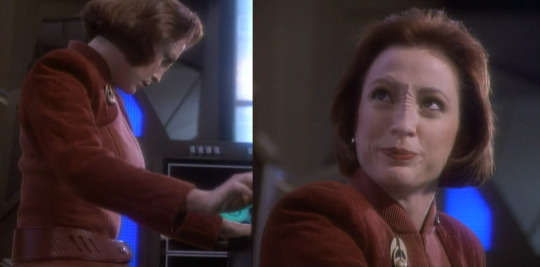
I guess they still have cosmetic surgery in the 24th century.
Odo beams into Ops to join the team, briefly giving us a full head-to-toe view of the goo he has shaped into a brownish-beige Bajoran uniform. My favourite part are the Uggs boots. Do all the Bajoran uniforms come with little booties? They’re not particularly intimidating for the Chief of Security, although they do look like they’d be great for someone on their feet all day.
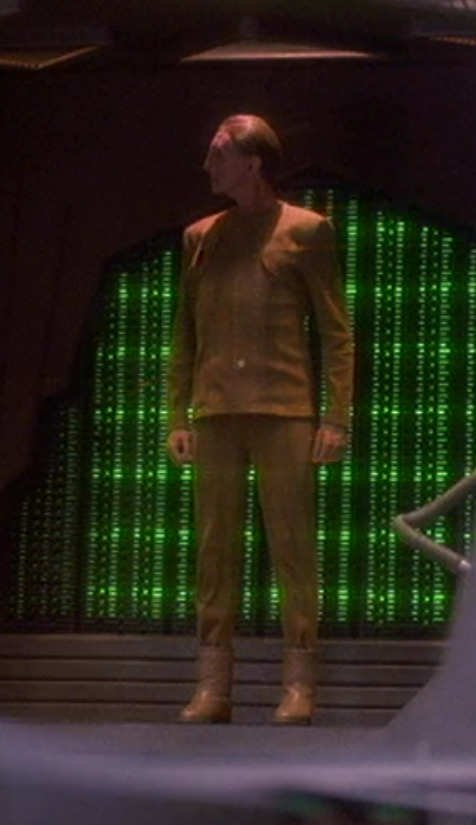
Fighting crime in comfort.
We can also see in this scene that the costume department has decided to flare out the lapels on the Starfleet uniforms; I actually don’t remember if this trend continues into future episodes of DS9, but the same uniforms lay flat on Voyager (which hadn’t yet premiered at this point), so we’ll check back in on that. It’s an interesting styling choice, and kind of makes Bashir and O’Brien look like they’re hitting the club after work.
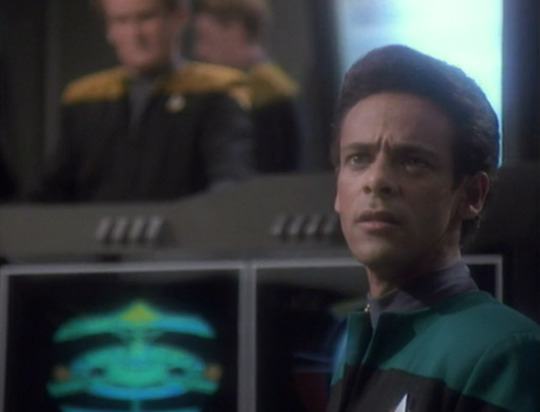
I mean, I guess I don’t know that they aren’t…
Inside the wormhole, Sisko converses with the locals through his memories, and we see the aliens speak to him through various characters. Among them are Locutus in his full Borg makeup and Kai Opaka in elaborate Bajoran religious garb. We saw Opaka in this outfit in part 1, although it looks like they may have draped the outermost layer differently here.
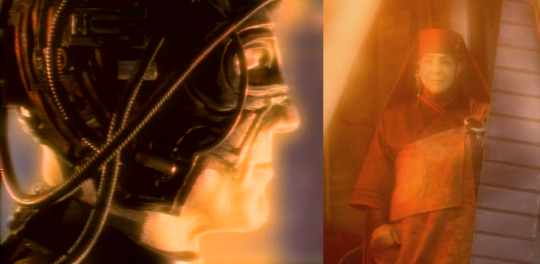
It’s hard to tell what’s changed through the Memory Haze™.
The aliens also take on the appearance of the Chicago Cubs in old-timey uniforms – worn by fictional holodeck characters – and Sisko’s former crew in a TNG-era look. The baseball uniforms will show up again in Deep Space 9, but I suspect the Starfleet uniforms are recycled directly from The Next Generation, giving them a nice on-screen send-off before retirement.
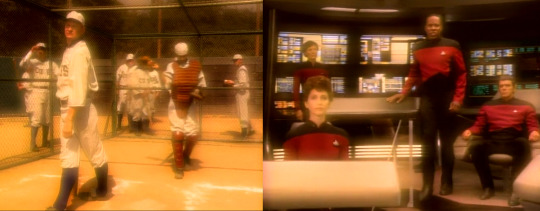
These are all core memories for Sisko.
Back on the station, we get a better look at Major Kira’s Bajoran earring as she jumps on a subspace call with her #1 fan, Gul Dukat. The jewelry is made of a silver metal, with lower and upper pieces connected by a fine chain.
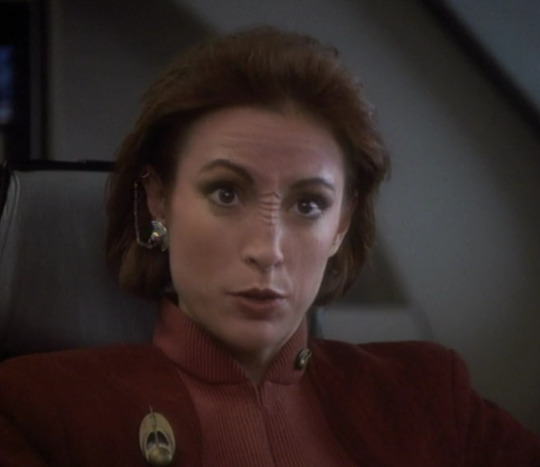
It channels her pagh, as well as six stations of FM radio.
Dukat, of course, shows up wearing the same thing Cardassians always wear, made out of old recycled tires.
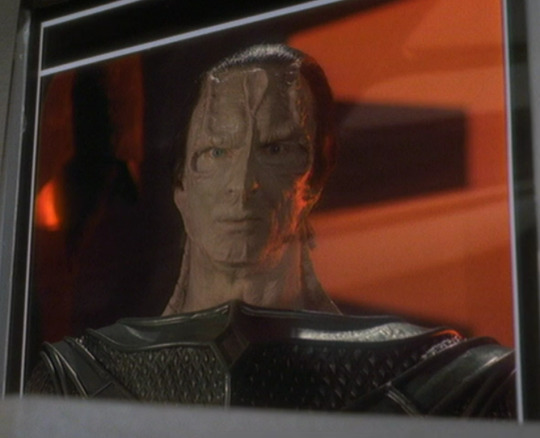
It’s actually very eco-friendly.
Going back to Benjamin, we finally get some new costumes as Sisko finds himself snuggling his dead wife. Well, one of the aliens inhabiting the memory of his dead wife. They’re dressed for a lovely picnic in the park, Ben in a striped jewel tone shirt, Jennifer in an elegant pink dress.
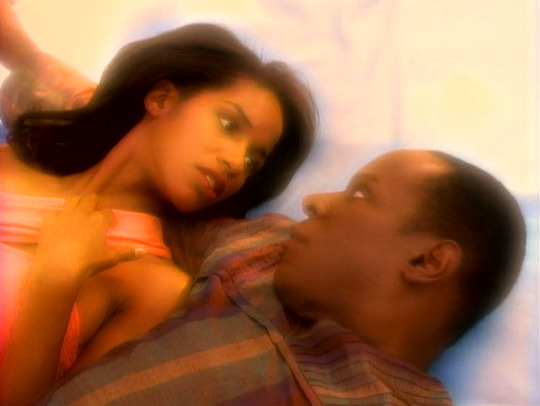
Does this human look good on me?
We can see that the fabric on the top section of Sisko’s shirt has been pleated and pressed flat before being sewn, a trick that seems to be used a lot in Star Trek to create more exotic and visually interesting looks from regular Earth textiles. In this case, it complements the fabric’s vertical stripes nicely. The shirt also has a geometric neckline with a notch in front, giving just a little flirty peek of chest. As we zoom out, we can see it has been paired with an extremely high-waisted pair of olive green pants. From this angle, we can also see that Jennifer’s silky-looking dress tapers at the waist, and has been paired with matching tights and shoes. It’s an adorable look somewhere between “prom queen” and “dance recital.”
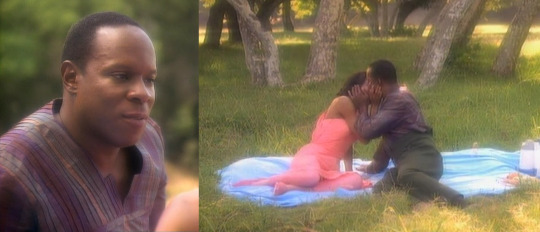
This is what it looks like when you can just beam to a picnic site instead of hiking.
In a scene that’s no doubt just as pleasing to our Commander, we next see him in the memory of a holodeck baseball game, wearing a baseball mitt and cap, while an alien inhabits the image of his son (dressed in a catcher’s uniform) nearby.
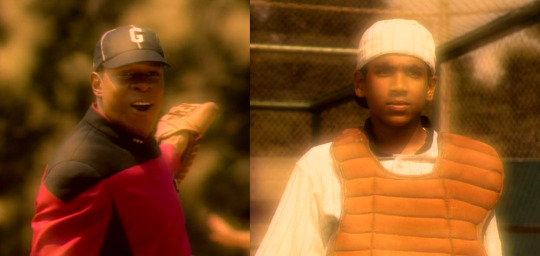
Is this going to become a theme, Dad?
In an incredible bit of attention to detail, even the background actors in this scene appear to be dressed in period-appropriate suits and hats. Then again, it’s very possible Paramount already had these costumes in the back, and they were among the few outfits they DIDN’T need to make custom for this episode.
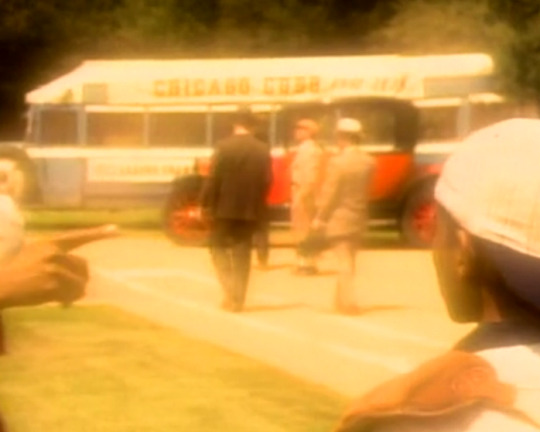
Look, son: normies.
Back on the station, Cardassians have begun to attack, meaning we get to see a crowd of evacuating civilians in one-colour co-ords. Among them is the real Jake Sisko, who isn’t sure about all the monochrome matching.
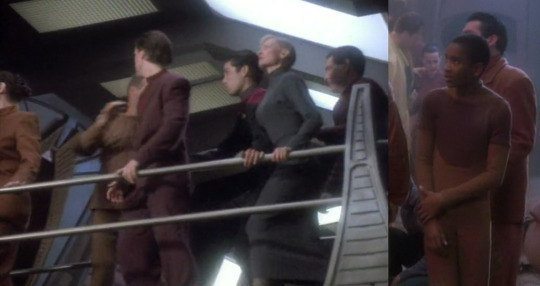
It just doesn’t feel appropriate for the season.
Also present is– what the? What the heck is this guy?! I don’t even know what this alien is, but it has a cute hooded blue dress. If anyone recognizes this species, please leave a comment with the ID!
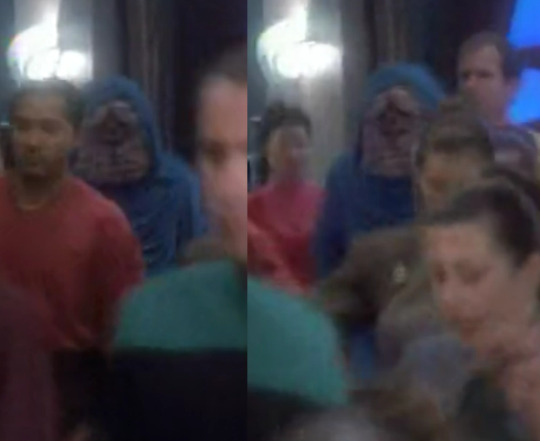
Is it visiting from the Star Wars universe?
We finish out the episode – at least in terms of costumes – with a fantastic showing from Quark. He hasn’t changed since part 1, but we do get a better view of the details of his outfit, including the giant, spherical, shiny buttons on his jacket, which may actually be small doorknobs. The jacket also features sparkly black bands around both arms and wide lapels that flare open dramatically. Like Sisko earlier, he finishes the outfit with olive green pants pulled up as high as they’ll go.
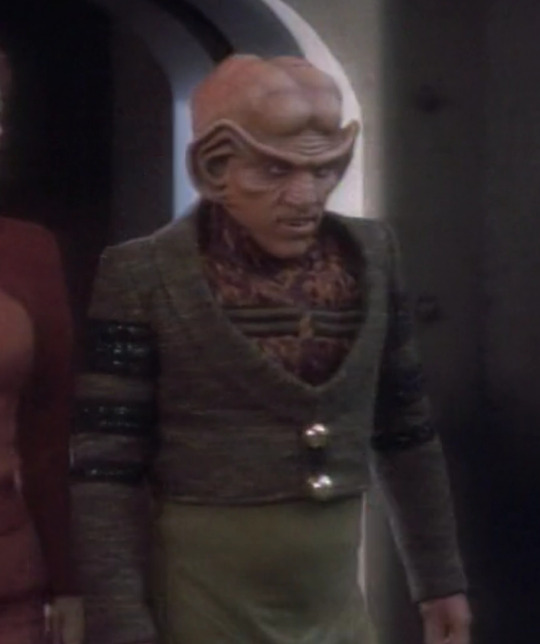
The Ferengi who invents belts will be drowning in latinum.
—
The Costume Designer for this episode was Robert Blackman. The Wardrobe Supervisor was Carol Kunz. Key Costumers include Maurice Palinski, Phyllis Corcoran-Woods, Jerry Bono, and Patti Borggrebe-Taylor.
3 notes
·
View notes
Text
#i know there are multiple ships in each of these shows#but i'm referring to the main crew#like of the main ships#or in ds9's case: space station#i hope that's clear#ok also I love voyager crew to death but I don't think they're winning this#I think it would be the TOS crew#they're just such a well oiled machine#and they have the benefits of not having two different crews who have to learn to work together#the voyager crew is a hot mess#love them so much though#TNG crew would take forever cause Picard keeps stopping to mull over every decision#ds9 crew keeps having to waste time getting Quark pardoned at every different planet he tries to scam#odo keeps suggesting they just leave him but weirdly enough he's always quick to volunteer to be part of the rescue missions#ok also this might be controversial#but i don't think the Cerritos would do as badly as one might think#like they're pretty capable#i don't think they're winning by any means#but i don't think they'd be there forever#star trek#star trek tos#star trek lower decks#star trek the original series#star trek the next generation#star trek tng#star trek voyager#trek#star trek ds9#star trek deep space nine#star trek strange new worlds
8 notes
·
View notes
Text
DS9 trivia from IMDB - Part 3
- Dax was originally envisioned as an alien from a low-gravity world forced to get around in a wheelchair and who flew around her quarters. The concept was scrapped because the "flight" cables were too difficult to rig. However, the idea was revisited in Star Trek: Deep Space Nine: Melora (1993) featuring a guest character.
- Star Trek: Deep Space Nine: Trials and Tribble-ations (1996), a time travel story, was written to mark the 30th Anniversary of the Star Trek franchise. The DS9 crew travels back to 2268 at the time of Star Trek (1966) episode 2.15, Star Trek: The Trouble with Tribbles (1967), to prevent Arne Darvin from assassinating Captain Kirk and changing the timeline. Due to the ages of William Shatner, Leonard Nimoy and the other original cast members, it was decided to have this show's cast interact with the original footage of the Star Trek (1966) episode. Bluescreen and computer technology were used that had recently been employed for Forrest Gump (1994), another Paramount property.
- The primary design of Deep Space Nine was based on a gyroscope, but with the top and bottom parts removed. Some of the earlier designs by Herman F. Zimmerman had complete hoops, also like a gyroscope, and the idea was that rotating the station would create artificial gravity, until someone pointed out that there was no need for this, as Star Trek ships use gravity generators. However, the idea of a halo-shaped space station stuck, and it was used in the final design. Artificial gravity by rotating sections would also complicate matters as fans had already noted many similarities with Babylon 5 (1993), in which the titular station rotates to generate artificial gravity. Fans accused Paramount of plagiarizing many aspects of the show after J. Michael Straczynski pitched the show to Paramount Studios in the late 80's.
- The name of the alien race "Ferengi" is derived from the Persian word for "foreigner", which is Farangi.
- Worf never refers to nor addresses Quark by name. From joining the crew in season four to the finale, Worf always referred to him as "the Ferengi bartender".
- With the show debuting shortly after the 1992 Presidential election, some television viewers who were largely unfamiliar with the Star Trek franchise mistakenly believed that Quark was a lampoon of Independent Presidential candidate Ross Perot (short height, large ears, financially minded or obsessed). That was obviously not the case, as the Ferengi appeared in Star Trek: The Next Generation (1987) Star Trek: The Next Generation: The Last Outpost (1987), five years before Perot announced his candidacy.
- The tankards used for Klingon bloodwine are actually measuring cups used in baking.
- The appearance of the Trill symbiont is different from when it initially appeared on Star Trek: The Next Generation (1987) season four, episode twenty-three, "The Host". In that episode, the symbiont's appearance was made to resemble a caterpillar with the head of an octopus. According to Make-Up Supervisor Michael Westmore, the symbiont was re-made for this series to be more "stream-lined" to make it easier to handle. Also, the appearance of the Trill hosts had changed as well. In "The Host", the Trill people had semi-ridged foreheads and no body spots, but in this series, they have normal foreheads, and body spots. In "The Host", the Trill was also terrified of being transported, insinuating that it would damage the symbiont, but none of the Trills ever mentioned concerns with being transported.
- The Dominion War storyline proved to be very divisive among veterans of the "Star Trek" universe. George Takei, in particular, voiced his belief that the storyline was directly antithetical to Gene Roddenberry's original concept of a peaceful, Utopian future.
- From the fourth season on, the writers felt that they enjoyed an unprecedented amount of freedom in coming up with ideas for their Dominon War story arc. The first seasons of this show had run simultaneously with the last seasons of Star Trek: The Next Generation (1987), so they had to maintain continuity with the latter show's story developments. After Next Generation wrapped in 1994 and Star Trek: Generations (1994) was released, there were no immediate plans for more theatrical movies, and Star Trek: Voyager (1995) wouldn't be directly affected, as it took place in the Delta Quadrant. The writers thus felt that they could take the main storyline in any direction, and decided to stir up the peaceful status quo of the Alpha Quadrant, by pitting several of its groups against each other.
169 notes
·
View notes
Text
Due to work stress I’ve been falling back on comfort media, so please have this Jeeves & Wooster Star Trek AU that, I cannot emphasize enough, literally no one asked for.
-
We Woosters are almost exclusively terrestrial beings, despite the rallying round to the other galaxies in the last few centuries. Unlike Gussie Fink-Nottle, who had been raring for the greener (and more reptilian) pastures of space since childhood, I was content to stay on Earth. I rather fancied myself like that one chap who was bound in that one thing and considered himself the king of that other thing. Jeeves would know who I’m talking about.
However, there’s nothing like Aunt Agatha on a warpath to make one boldly go anywhere that she isn’t.
Salvation, in this case, came in the imposing form of Honoria Glossop, who had graduated from bossing around a young B. Wooster to bossing around some very important bit of the United Earth Government. She looked, as always, as if she had successfully won a hand-to-hand match against a Klingon before breakfast, so I guessed that the old U.E.G. was falling in line better than I ever had.
“Well, we can’t actually hire you,” she said, scrolling through a padd industriously, “but I can appoint you as a special Terran diplomat to somewhere unimportant in Federation space. As long as we make it clear that you’re not being paid, no one will look at your credentials too closely.”
Normally this kind of rampant nepotism (NB: is that the word I want? Ask Jeeves later) would go against the Code of the Woosters, which has undergone some much needed revision over the ages but still advocated for honest dealings. Still, Aunt Agatha was bearing down on me with the fury of a woman deprived of both matrimonial plans and a fairly expensive ceramic cow-creamer, so desperate times called for desperate space stations.
After some additional scrolling and frowning, Horatia finally found a suitably backwater station called Deep Space Nine that was welcoming a Starfleet contingent only next week.
“I say,” I said. “Nothing too bad happened to the first eight, I hope?”
Honoria sighed with set-upon indignity and said “really, Bertie,” but didn’t actually answer my question; instead, she explained that this particular novenary d. s. was ideal for my aunt-hiding needs. “It’s basically in the middle of nowhere. Even you couldn’t screw it up.”
This seemed a bit harsh, coming from a gal whose engagement to Madeline Bassett I once needed to salvage with the help of a Bolian theatre troupe and five dozen chickens, but I nobly held my tongue.
And the first few days on DS9 were exactly that; I ankled about the dusty circular bit and gave a occasional heave-ho to some of the more manageable debris in a show of camaraderie. There was a bar, to my delight, and I holed up there for a goodish period, buying rounds for the new residents and learning some new gambling games. I took notes to share with the Drones upon my return to Earth, and lost enough money to endear me to most of the bar’s regulars. The bar proprietor, a singular fellow named Quark, had never hard of gin rummy before, so I gave ample demonstration. All of the regulars were only too happy to go on about the current intergalactic politics; I didn’t totally understand all of it, but I gamely wrote things down and send comms to Honoria. It seemed like there really wasn’t much to this whole diplomacy thing; I imagined returning to Earth in a wave of intergalactic success to the astonishment of the Drones and Aunt Agatha and everyone else who considered me a bit mentally negligible.
“What,” I’d say rakishly, in the style of one of my favorite holovids, “like it’s hard?”
All of my plans for relaxing in an aunt-free corner of space and noodling around spreading good cheer towards Terrans was complicated a few days later when a wormhole appeared next to the station with all the suddenness of Claude and Eustace crashing into my flat at some unholy hour. All of the Starfleet types ran around looking intent for a while, but it seemed like the wormhole, like Claude and Eustace, would be staying put longer than expected.
This, I gathered in the days to come, rather changed our posish about being in the middle of nowhere.
There was a hubbub with the United Earth Government, but at that point reassigning someone else as ambassador would be a little like closing the barn door after the wormhole had bolted, so B. Wooster was stuck with the task. The good news was that Aunt Agatha still hadn’t figured out where I was; the bad news was that now Honoria and several other important-sounding U.E.G. officials were raining down comms messages. They all seemed inordinately fond of capital letters.
I first caught on that this whole diplomatic wheeze was now more important than Honoria had let on when Jeeves suddenly arrived.
#this is technically a DS9 AU but no characters from DS9 actually appear except for in the background#I still have very little knowledge of Star Trek so bear with me#jeeves and wooster#ds9#jeeves & wooster#I was just deeply amused at the prospect of Bertie solving low stakes problems while all the high stakes DS9 drama goes in background#I still haven't decided if Jeeves is Terran or Bajoran#because I am kind of interested in him being sent from the bajoran provisional government#and is 10000% a spy
380 notes
·
View notes
Text
Deep Space Nine at Thirty

Thirty years ago, on January 3rd, 1993, Star Trek: Deep Space Nine debuted on the airwaves. The show would not only change the Star Trek franchise but along with a few other 90s shows, laid the foundation for serialized storytelling in prime-time television and later streamers. DS9, as the fans call it, has a prescience and was not only relevant when it aired, but much can still be gleaned from the show today.
The idea of having a stationary setting for a Star Trek installation had been floating about since the 80s with producer Harve Bennet’s unsuccessful Starfleet Academy pitch. Since the franchise had done two starship instalments, it seemed the next frontier, but not the final, would see a crew more or less stay put and have the galaxy come to them. A New York city in space.
Originally Brandon Tartikoff, the head of Paramount, pitched the idea. If Star Trek had been a “wagon train to the stars,” what the franchise needed was a Rifleman-type show. A sheriff raising a son in a wild west frontier colony on some distant planet at the far ends of Federation territory. Since this would entail a copious amount of location shooting, the idea was shifted to a space station, but the western motif stuck. Sisko became the mayor, Jake his son. Odo was the Sheriff, O’Brien the Everyman, Dax the Wise ol’ timer, Quark the local barkeep, Kira the Indigenous person, and Bashir was the town doctor.
What fascinated the show's creators, Rick Berman and especially Michael Piller, was this idea of staying put. Instead of solving problems and then leaving to explore some new planet each week, the characters of DS9 would have to face the ramifications of their actions week after week. What Piller described as the difference between “a one-night stand and a relationship.” DS9's ethos would also allow the writers to explore relationships and community in greater depth. The show has been described as a family-oriented Star Trek series. This theme was explored in the previous two outings and subsequent instalments, but not in the same breadth as DS9. As Armin Shimerman (Quark) has said, every Ferengi episode is a “family episode.”
Each character on the show, including the recurring characters, would have to face their family, or in Dax’s case, her previous hosts. Even Gul Dukat, the baddest Cardassian in the whole damn town, would have to half-assedly raise his half-Bajoran daughter.
Unlike the previous two Star Trek shows, the cast of DS9 would boldly go into the exploration of themselves. Sisko says it best in the pilot, “we explore our lives day by day.” Each character on DS9 experiences profound growth and change that they do not resemble the person we first meet. While character growth occurs in the other series, DS9’s episodic serialization and stationary setting forced an introspective aspect on the characters. It was the character show. DS9 was also full of several firsts for the franchise. Like Avery Brooks as the first Black lead, Kira as the first female first officer that wasn’t written off after the pilot, Dax as the first full-time transgender character, and several other notables.
DS9 isn’t just the best Star Trek series, it was some of the best American television of the 1990s. Along with other series like Twin Peaks, Melrose Place, and later seasons of The Larry Sanders Show, DS9 brought continuity to prime-time television through the dreaded ‘S’ word, serialization. Not a new concept, serialization was foreign to most prime-time outings. These shows not only offered nascent serialization but a continuity lacking in other prime-time shows. Despite the continuity of Voyager, writer Ronald D. Moore left the show after a few episodes in season six when he realized the producers weren’t interested in DS9-style continuity.
The characters on 80s American television essentially remained the same. This is especially true of sitcoms where the delicate balance of comedic tensions between personalities must maintain the comedic pecking order. A character learns a lesson, but essentially things are back to normal in the next episode. Norm on Cheers might be victorious one day, but eventually, he has to go back to his barstool to play the loser but is always one level above Cliff Clavin. That’s how the show maintained the comedy. Rose on The Golden Girls will always be Rose.
Characters on The Next Generation grew, but any event was solved by the next episode, and things were back to normal as the Enterprise D was off on a new adventure. On DS9 the characters grew, morphed, changed, and each episode mattered to the episodes after it. They couldn’t warp to some new planet. The crew had to stay on that station dealing with the ramifications of what they did last week or the week before. Unfortunately, the pseudo serialization, or episodic serialization, killed the ratings. If you missed episode three of the season, you might be lost in episode twenty, as happened to this writer.
This was before DVD box sets. The producers of DS9 were taking a chance with the format, a format that is ubiquitous in the streaming world. In the 90s, it was tantamount to ratings suicide as audiences were accustomed to missing an episode here and there. After all, there was life to live and grass to touch.
I was in grade five when the show debuted. I caught every episode of the first season. In grade six, I started to play baseball and had after-school art programs and rehearsals for plays. These things usually happened on the night DS9 aired. I didn’t always have the spare cash to tape the episodes. However, this was similar to my TNG experience. If I missed an episode, I would catch it on hiatus week or in syndication, no biggie. With DS9, missing an episode was flirting with disaster. I always seemed to miss the important episodes too. I eventually stopped watching the show regularly in the third season. I’d catch the odd episode in later seasons and ask, why are they at war with the Klingons? Why is Weyoun alive? My DS9 love affair, and my Star Trek fandom, were put on hold as I entered mid-adolescence.
By the early aughts, several factors going on in my life drew me back into the warmth of Star Trek fandom. I downloaded the entire run of DS9 and started from the beginning. I still have those files. I sentimentally refuse to delete them despite their lacklustre quality.
Although it took about six years after the show ended, I did catch up. DS9 now holds a special place in my heart. Unlike the perfectly evolved humans on the Enterprise D, the DS9 characters start the show with major character flaws. As the show progresses, they learn and grow. Sisko’s journey is perhaps the most profound, starting out with PTSD caused by the death of his wife, isolated, alone, a single parent, questioning his career and life. Sisko then ends up a demigod destined not only to save the alpha quadrant but the wormhole aliens, aka the Prophets. When asked which is my favourite Star Trek series, I sometimes reply with, “the Sisko is of Bajor.”
Sisko’s salvation partially comes from the community he helps build on the station. As the saying goes, “it takes a community,” and that’s DS9’s legacy. At its core, it’s about friendship, community, and family, not just blood kin but the family we create along with way. When my mental health is at its worst, I turn to Star Trek to buoy my spirits. When I am in deep crisis, survival mode, I turn not to the original series, Enterprise, nor Next Gen but to DS9. It’s the bicycle wheel-shaped space station that gives the most comfort, and the most hope to keep going. To fight and try to overcome.
DS9 also attempted to walk back some of the more overt colonialist and imperialist tropes found in previous Star Trek outings. Not being an American, the original series displays a type of American bravado, melting pot assimilation, and is rife with American imperialism and exceptionalism. In the future, Earth unified into an American type of state, not a Westminster style of government. The United Federation of Planets is described by outsiders as a “homo sapiens-only club,” and its head is a President. Kirk’s main enemies, the Klingons and Romulans, were stand-ins for America’s communist foes, the Soviet Union, and the People's Republic of China. One of the main villain species on Next Gen was the Borg, a homogenizing force which threatened occidental ideals of liberalism and the rights of the individual.
Although DS9’s backdrop was the Cardassian occupation of Bajor and is analogous to many atrocious regimes, such as South African apartheid, French Algeria, the Holocaust, and the genocide of Indigenous peoples in the Americas, the main villain on DS9 was the Dominion. Created as an anti-federation, a dictatorial colonizing/imperialist regime, it allowed the show to explore the darker side of the Federation by meeting its antithesis.
Star Trek displays an unshakeable Federation exceptionalism that TNG was the first to dissect. Yet internal threats to the Federation on that show were often rouge Starfleet admirals who would be caught by the Enterprise D crew, and all would be well next episode. DS9 dismantles that trope. The Federation, as great as it is, is flawed. When the going gets rough, the smug moral superiority of the Federation gets tossed out the window to achieve its goal.
Mass hysteria and fear, brought on by the Dominion and Changeling infiltrators, are akin to the Red Scare and McCarthyism, and with great prescience, the War on Terror. Not only does DS9 tackle, in a historical context, nationalism, capitalism, colonialism, imperialism, and exceptionalism, but contains a universality that projects the show’s themes into the future. Most recently, the Iranian government and the Ferengi has a lot in common. Protests over the reach of the state on women’s dress and bodies mirror the Ferengi’s attitudes towards women. Ferengi women are not allowed to fully participate in society and must remain unclothed. Eventually, this injustice is corrected in the show when Quark’s mother Ishka leads a suffragette/feminist movement.
DS9 also tackled an often-taboo topic in the Star Trek universe. Namely faith and religion. Not only would Bajoran faith dominate throughout the show, but the show's writers never gave concrete answers to several posed questions about faith. One reading of the show could be of a human, Sisko, reconnecting with or finding their faith.
Whether they are wormhole aliens or the Prophets to you, January 3rd is a sacred day, Ha’mara. Ha’mara is the anniversary of when the prophets delivered the Emissary, the Sisko, to the Bajoran people and Star Trek fandom, and this is the thirtieth anniversary. Although I won’t be fasting, I am trying to show my festive gratitude to DS9 through this post.
There is no shortage of modern-day analogies which DS9 did not explore. One of its main failings, as showrunner Ira Steven Behr has stated, is the lack of Queer representation. Dax is transgendered, having been “both a man and a woman.” Yet this wasn't explored fully or brought into the light save for one episode, Rejoined, in season four, and an awkward kiss in season seven. Actor Andrew Robinson has stated on many occasions that he played his character Garak as bisexual and was attracted to Doctor Bashir. However, the Queer community would have to wait until the Berman era of Star Trek ended to see themselves not cloaked behind metaphor.
DS9 is neatly packaged in 90s aesthetics. The colour palette, production design, casting, acting, and story structure, but that is also part of its charm. It cannot be divorced visually from its time, yet its stories and themes transcend the decade. DS9 showcases humanity at its best and its worst. Perhaps it is that humility, the acceptance of our failures and our collective desire to do better which makes the show so endearing.
During DS9's first run, not only were fans not amused by the stationary aspect of the show, but they were also equally appalled by its darkness and its probing of the failings of the Federation. As several fans have pointed out, DS9 is the lefthanded red-headed stepchild of the franchise and fans like me, although in love with the show, got lost by its episodic serialization. It took the last thirty years after it first aired to achieve a super status in Star Trek fandom. Now regarded in the community as the best series out of the lot, paradoxically it is still not necessarily a fan favourite. DS9’s frank and sobering look at humanity is its power, and no other series, save for perhaps Discovery and Picard, dare to look so closely at our collective failings.
Star Trek is by definition idealistic and utopian. Earth has evolved into a paradise and made peace with many alien races, cofounding the Federation. A galactic idealist state. DS9 challenged that utopianism and in self-referential glory, attempted to dismantle Star Trek exceptionalism itself. In that process, the show stands alone, with perhaps Discovery carrying on the torch. Thirty years after its premiere, it still has a lasting impact on viewers. As Sisko tells Kira in season two, “it’s easy to be a saint in paradise…but…out [here those] problems haven’t been solved yet.” As we claw our way through the twenty-first century, DS9’s message, its warning, stands as a rallying cry to keep on fighting, to solve that which has not been solved and to continue to explore our lives "day by day."
9 notes
·
View notes
Text
DS9: "The Search, Part I"
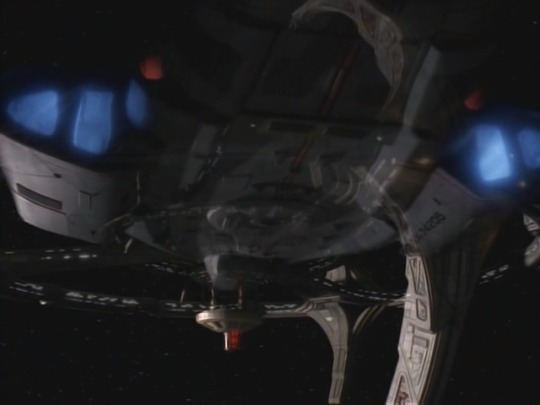
Commander Sisko returns from Starfleet Headquarters with a mission to search the Gamma Quadrant for the Founders, the mysterious leaders of the Dominion. And just in case the Founders aren't interested in diplomacy, Sisko has requisitioned an experimental warship, the USS Defiant.
I remember reading about this episode shortly before it aired, and holy shit I was excited! The Defiant sounded like everything I never knew I wanted to have on Star Trek: Deep Space Nine. Mind you, I liked the premise of a large, janky station with inadequate defenses, but it made perfect sense to give Deep Space Nine a badass little ship. After years of Star Trek's bigger-is-better approach to ship design, the Dominion's scrappy little fighters in "The Jem'Hadar" gave me a taste for fast attack craft. And it's got a Romulan cloaking device? *chef's kiss*
More than anything, though, I fell in love with the Defiant because it was a prototype for an anti-Borg battle fleet. Up to this point, Star Trek had made the Borg seem impervious to all conventional weaponry, so that they can only be beaten with clever plot devices and hacking, if you're lucky. But Sisko declares in no uncertain terms that the Defiant was designed to "fight and defeat the Borg," and he made me believe it. All at once I imagined a vast Starfleet armada with dozens of Defiant-class ships, and suddenly anything seemed possible. (I eventually got a 223k fanfic out of that notion.)
So I was very ready for a two-parter about this new ship running around beating ass and being cool as hell. I should have known that five minutes after the good guys get a cloaking device, we'd find out all the ways bad guys can see through it. It'll be a while before the Defiant really gets to live up to the hype, but at least the set design gives us the tension of being cooped up in a submarine deep in enemy waters.
We're introduced here to Lt. Commander Michael Eddington and Sub-Commander T'Rul, but unfortunately neither premise really takes off. Eddington is Starfleet's latest attempt to wrest control of DS9's security from Constable Odo, a conflict that heats up fast and then fizzles into nothing. (Odo says he'll resign, but there's no follow-up on that.) T'Rul is a Romulan liaison, part of the deal to get a cloaking device on the Defiant. I still think there were a lot of story possibilities for such a hostile character performing such a lonely job, but evidently the writers didn't agree. Fortunately Eddington will eventually get a much more important storyline, and T'Rul actress Martha Hackett will land a more memorable recurring role on Star Trek: Voyager.
Oh, and uh, Odo runs off to the Omarion Nebula and finds a planet of shapeshifters. We are desperately out of time, fans!
4 notes
·
View notes
Text
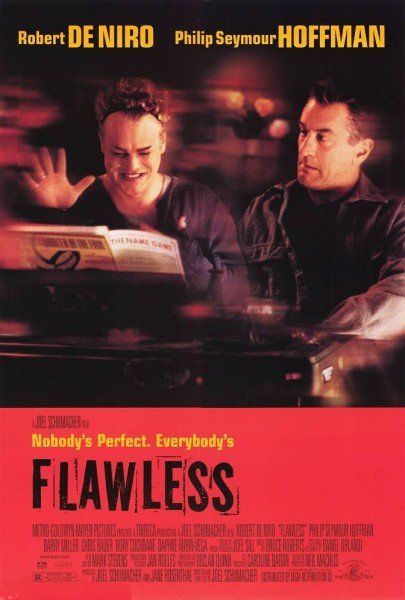

TREKMATCH! # 749 - DS9's "Field of Fire" vs 1999's Flawless
FLAWLESS
A homophobic cop has a stroke and has to take singing lessons from his drag queen neighbor while the whole building is being terrorized by a drug guy. Well everybody learns some lessons about life and love and stealing money from criminals. It's a little schmaltzy but pretty good about LGBTQ+ issues for a 90s movie.
GRADE: C
STAR TREK: DEEP SPACE NINE - "Field of Fire"
Somebody is killing Starfleet randos on DS9 with old fashioned projectile bullets so Ezri digs up her past serial killer self to solve the case! They never really explained why the killer was doing it, though, apart from a vague "he had a tragedy" explanation. It's a dang war, like everybody on the station has had a tragedy!
GRADE: C+
Victory to Trek, so movies are up 377-372!
3 notes
·
View notes
Note
So since Louie and Goldie owns a bar in DS87 and Drake and Gosalyn live there what do the other think of each other
P.S. I’m sure that Launchpad would be happy to see one of Dewey’s Brothers
P.S.S. I think Launchpad would be assigned to be the U.S.S. Thunderquack helmsman in case you are still figuring out how to put him in DS87
Ooooh ok I really like this question, because I was thinking about Louie and Gos' friendship for the AU last night!
I'm gonna address the three parts in reverse, and under a "read more" because wow this got long, but it was a very fun one!
So, for LP being the Thunderquack's helmsman, yes! I actually did mention that in this ask, but I still haven't figured out where he'd fit in on the station itself (when not flying the 'Quack). I did propose security or tactical, but I might add engineering to the list, bc he's a heck of a mechanic. Maybe a bit of all three? Idk, it'll probably be whichever allows him to help Drake and Gos out most with the fighting biz (which, tbh, is all three options XD).
Heck yeah LP would love to have Louie on the station! Having them both + Goldie is that much stronger of a tie between DS87 and the Klondike. There's probably some whole space communiqué group chat that they're all in to keep in touch, and LP and Louie often hang out and talk about Dewey's/the other kids' latest antics that they got holo-photos of or whatever. LP probably asks Louie for friendship advice about Dewey (i.e., what to get him for his birthday or the kids' Starfleet graduation ceremony - oooh, everyone definitely makes a big trip to Earth for that!), but will also become good friends with Louie himself of course, and will kinda help to act as a balance for Louie's conscience (sometimes against Goldie, sometimes otherwise - Goldie and LP (and Drake) all kinda become Louie's station guardians?), when he starts to tread lines with his scheming. Louie will use LP for all sorts of taste-tests and other guinea pig experiments for the bar, but will also ask him for life advice. Both will seek each other out if they start to feel homesick for the Klondike, and are the first two to greet the Klondike's crew at the airlock whenever she docks at the station. And if either of them decide to take a trip to the Klondike, the other is sure to come with.
And now for Goldie + Louie and Drake + Gos!
By parallel, Goldie and Drake are like Rom/Quark and Sisko, being the parents/guardians of the kiddos, but I don't think they have the same kinds of qualms about their kids hanging out together at first as their DS9 counterparts do. If anything, Goldie and Drake are probably grateful in their own ways that their kids find friendship in each other on such a remote station - Drake, because Gos has already gone through so much with the occupation and her grandfather and being a resistance fighter that she more than deserves to have a kid her own age (and other visiting kids) to be friends with, and Goldie, because as much as she enjoys being Louie's mentor and all that they do, she knows that Louie also needs someone his own age to hang out with and to keep him from growing up too fast.
Besides the kids though, Drake is Very Suspicious of Goldie, when you put the Good Superhero against the Morally Gray Con Artist, but he also knows that she's a valuable resource for connections and such to keep in his back pocket for that same superhero business. Goldie knows that Drake's a good guy (and will be one of those on the inside loop about his secret identity, which she respects, no matter how much she may tease him from time to time), but will also sometimes try to use his status as one of the station's senior officers to get something for the bar. In general though, you'll often enough see the two of them hanging out and chatting at the bar, Drake eating dinner after a long day as Goldie tends to things. They've both seen a lot of things in their time (even if there's quite a difference in their ages), so they have plenty of stories to share. (But when Drake starts climbing up on top of the bar to add flourish to his exploits, Goldie cuts him off for the night. XD)
Louie thinks Drake is pretty cool, very much a nerd, but cool and respectable and trustworthy (in a way, he reminds him of his Uncle Donald, and when he's specifically missing his uncle, he'll tend to gravitate towards Drake), and when the station is in danger and needs a Hero, Louie will want to simultaneously seek Drake out for protection but also know where he is to avoid him because sure enough the danger will probably be right there alongside Drake.
Gos thinks Goldie is also cool, and kinda adopts her as her own cool aunt, after warming up to the idea of allowing herself to have a larger extended family after everything (Goldie in particular might actually have some good words for her about that). Goldie will often sneak Gos some extra dessert or sweets at the bar, even though Mr. Darkwing Dad is very much against this (but it's their little secret ;)). Goldie will also often teach Gos the same general scheming skills that she teaches Louie, again, to Drake's chagrin, or have her distract Louie, if she needs that for some reason.
And now for the kiddos themselves!
So when I was thinking about them last night, I realized just how much I need to see Louie and Gos be friends, because watch out DS87! Just imagine Jake and Nog's friendship and the shenanigans they get into early on, but with these two, instead of Jake and Nog, it's two Nogs (in his early days) and that means double the trouble. (And while Goldie and Drake are in general happy about their friendship, sometimes the trouble does go too far, and there are Consequences.)
They'll pull pranks and schemes like no other kids can (many of which will probably be similar to Jake and Nog's - the LoGos Consortium becomes a thing, a side business alliance behind the bar, if you will ;)). As much as Louie isn't really the active type when it comes to effort, Gos will coax out the best/worst in him for their shenanigans. When Goldie's away and Louie's running the bar, he'll sometimes enlist Gos as his own "first officer" to help run his own side hustles. Louie will also help Gos "sneak out" (as much as you can do that anyway on a station) whenever Drake grounds her, or whenever helping Drake be a liaison becomes too much and she needs to escape for a bit. Louie will also be someone Gos can talk to about losing/searching for her grandfather, because he can relate regarding Della (he becomes her Dewey a.k.a. her Webby for this AU, regarding that :P).
They'll have their spot overlooking the Promenade, able to watch (and immediately plan to con) newly-arrived guests to the station from the airlocks while eating jumja sticks and drinking Pep. They'll spearhead the station parts of secret operations between all the kids that are planned in the group communiqué, and they'll try taking a runabout out for a joyride from time to time. They'll share their worries about their respective parents/guardians, and go on joint-station-family weekend trips to Canard to explore and relax, and Gos will show Louie around the planet.
A lot of good times to be had with those two. :)
4 notes
·
View notes
Text
The noise of Deep Space Nine′s machines and computers changes based on where you are.
The computer cells are spread unevenly over the station. More are in the docking bays and ports, anywhere that connects to space, with double- and triple-safeties in place in case of an emergency and smaller safeties behind those. The humming is louder there. Non-technological spaces like the Promenade and the Habitat Ring have the bare minimum cells needed to be able to access the computer, with more connecting pieces than computer brain. You have to listen hard to hear the humming there.
Also, the fusion reactor makes a low throbbing noise, so the further you are from the core of the DS9 the quieter it gets.
Ops, of course, has the computer core. Ops has much more beeping and other alert and response noises than any of the public areas, since the computer is constantly updating the senior staff on security and communications and whatever else the senior staff needs to know. That also goes for offices and wardrooms.
#DS9#Deep Space Nine#Ambient noise#Ambience#Deep Space Nine Station#Deep Space 9#Deep Space Night Shift
13 notes
·
View notes
Text
A List of Older Fandoms for Quarantine Viewing
I thought it might be fun to put out a list of older fandoms or smaller fandoms that might be of interest to folks here. As we’re all still stuck with quarantine, perhaps you’re looking for some new/old media? Perhaps this list could help?
This is halfway between a rec list and a charting of my own fandom history. For anyone looking for some new fandoms to check out that are various flavors of interesting and a little older, check ‘em out!
Feel free to add your own!
In no specific order (other than maybe my DVD shelf??)

Patrick O’Brien books/Master and Commander - this was a fairly good-sized fandom back when the movie ‘Master and Commander’ came out. A must-watch for anyone who likes historical fiction, age of sail, and powerful homoeroticism.

David Drake’s Royal Cinnabar Navy series - did you ever want Master and Commander in space, but Stephen Maturin is a librarian named Adele Mundy who is a sharpshooter and utterly terrifying and wonderful and beloved ace representation? Fair warning: this series contains grapic descriptions of violence from an author who’s still working through his Vietnam PTSD. Here be dragons.
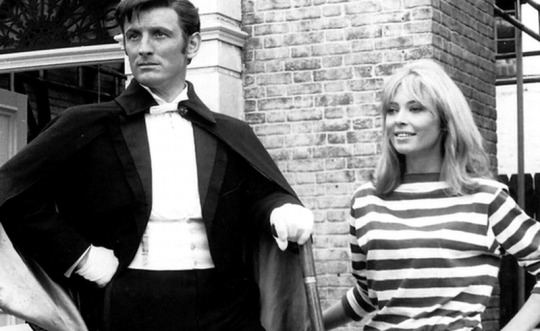
Adam Adamant Lives! - an Edwardian adventurer got frozen in a block of ice by his arch-nemesis The Face, thawed out in 1969, and now fights crime with a young woman sidekick and an actor-turned-butler who spouts limericks. It is a completely insane show and joyously dumb. Everyone involved is having a whale of a time. It’s hard to come by, but so worth watching it for the pure silliness.

Buffy the Vampire Slayer - I can’t believe this has become a fandom some people haven’t heard of, but here we are, far enough out from the massive cultural impact of Buffy that I need to remind folks. 1990s series about a cheerleader-turned-vampire slayer, struggling with both the supernatural and with high school (which is much worse).
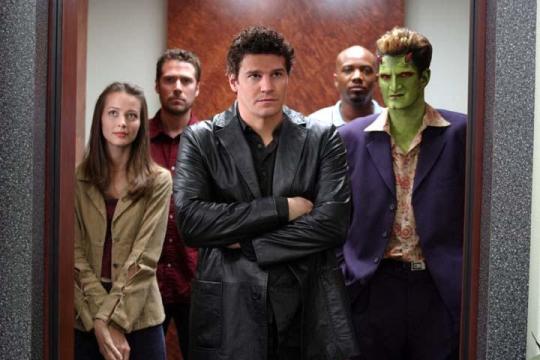
Angel - spinoff of Buffy, and in some ways my preferred series? It has so many problems, and the writing of seasons 3 and 4 is quite weak, but the characters are strong, the stories are solid, and Alexis Denisof’s Wesley Wyndam-Pryce remains one of my favorite character arcs in television.

Marble Hornets - here’s another fandom that doesn’t feel like it should be old, but it’s now over a decade since its premiere. One of the early webseries, Marble Hornets is still one of the best. Well done horror with occasionally iffy amateur acting, easily overcome with a surprising touch for cinematography. I’m a sucker for amateur film, especially when it’s well done and ambitious.

Babylon 5 - This was the first fandom I posted about on here, and still one of my great loves. Arcs before arcs on television were a thing. Huge overarching stories playing out over seasons. Great political intrigue on a space station. The grandest, most tragic Shakespearean romance that ever played out between two middle-aged alien diplomats.
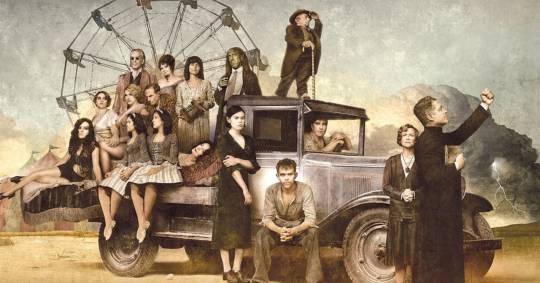
Carnivale - HBO prestige show before they had prestige shows. Bought the DVDs on the cover art alone, and they were so worth it: “1934. The Dustbowl. The last great age of magic.” Like most HBO shows, every possible content warning does probably apply to this show, though it’s not nearly as extreme as Game of Thrones, so if you could watch that, you can probably watch Carnivale.
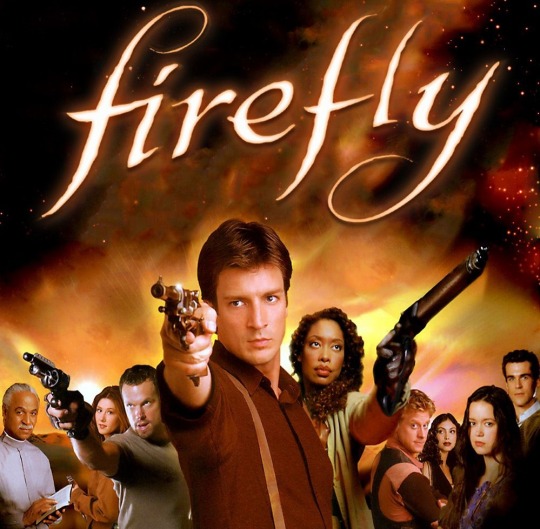
Firefly - space western courtesy of Joss Whedon. Only one series long, but really well done. Probably Whedon’s best work.
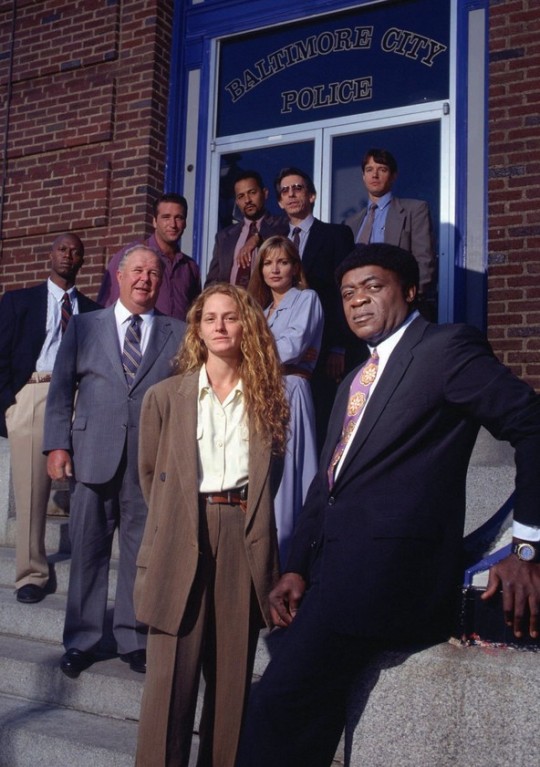
Homicide: Life on the Streets - early 1990s police procedural with a twist: it wanted to be a very accurate, realistic portrayal of a homicide unit, based on a documentary novel. The characters all feel real, you’re certain they all smell like cigarettes, coffee, and sweat. Also, can we applaud a show that has a female homicide detective who doesn’t wear makeup, has frizzy red hair, and never wears heels? Kay Howard is such a fantastic character. Frank Pembleton and Tim Bayliss and John Munch and Gee are all such wonderful, real characters. Another great show for prestige-television-before-it-existed.
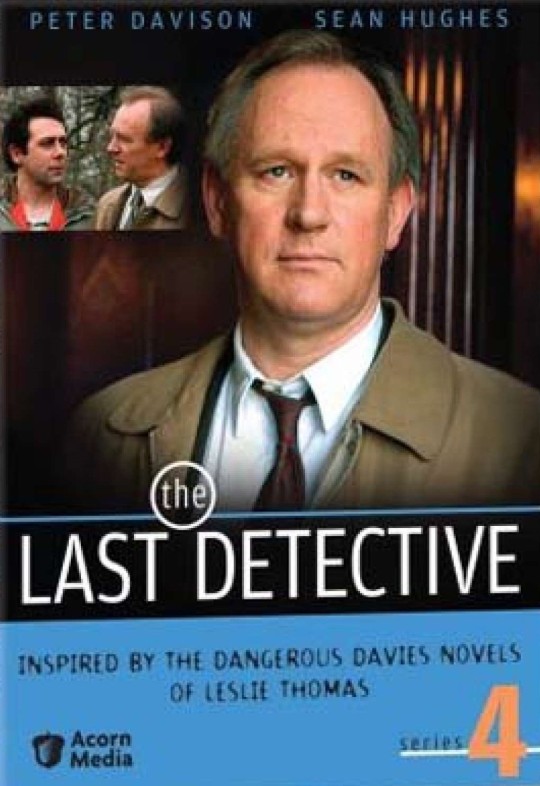
The Last Detective - British detective series about a detective who gets small, mournful cases ignored by everyone else and solves them mostly through dogged work rather than brilliance. This show is the most melancholy show I have ever seen, shockingly good in the quietest way possible, and remains one of my favorite detective series ever.
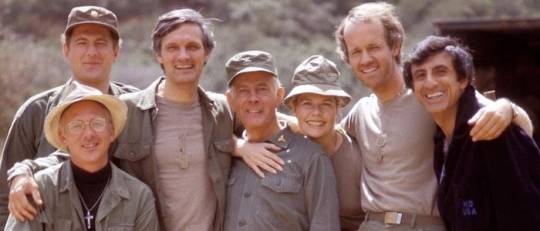
M*A*S*H - have you ever wanted a proper tragicomedy billed as a sitcom? There’s a reason this show is still considered the greatest sitcom ever made. Fair warning: the early seasons really haven’t aged well, and a lot of the comedy doesn’t land. But if you’re willing to stick with it to the later seasons, you’ll find a show that shifts toward one of the greatest tragicomedies ever.

Sapphire and Steel - 1970s/1980s British horror/sci-fi show about two mysterious beings that appear to resolve science fiction reinterpretations of horror concepts. Despite a shoestring budget, the writing is phenomenal, and the acting is perfect, particularly the icy intimacy between the two leads, David McCallum and Joanna Lumley.

Sherlock Holmes - before the modern interpretations, there was the 1980s series starring Jeremy Brett. If you want the single most accurate interpretation of Conan Doyle’s work, with characters who feel and look like they’ve stepped off the page (and the series that singlehandedly rehabilitated the character of Inspector Lestrade), this series is a must-watch. This has been my go-to comfort viewing for years.

Also, if you’re a Sherlock Holmes nut, and you’re desperate for more content, and willing to navigate a Cyrillic DVD menu for subtitles, might I suggest the late 70s Russian Sherlock Holmes series? Vasiliy Livanov’s Holmes is such a different interpretation of the character, and he’s a delight. And Vitaliy Solomin’s Watson is possibly my favorite Watson ever. He’s so done with everything.
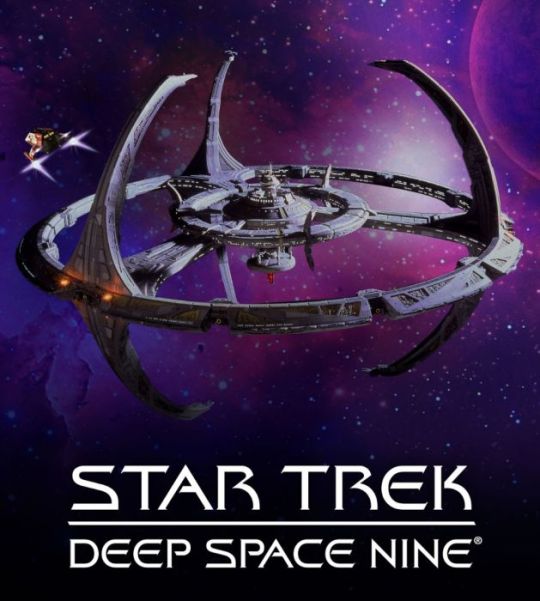
Star Trek: Deep Space Nine - sort of the forgotten middle child of the Star Trek series, but in many ways it’s one of the most ambitious. It was a rival/developed at the same time and somewhat by the same team as Babylon 5, so there are some striking similarities (space station, overarching stories, etc), but while B5 manages the political intrigue better, DS9 does a war better. It’s the darkest of the Star Trek series, investigating the more tarnished edges of the utopia. The characters are more deeply developed and flawed, and I love them all. Andrew Robinson’s portrayal of tailor-with-a-mysterious-past Garak is probably the best character Star Trek ever created in any series.
Hope those of you looking for new things to watch and dig into might find something in this list!
17 notes
·
View notes
Note
Headcanon: Julian Bashir is autistic and has frequent sensory overload, and the only two people who can help him are Garek and O’ Brien. Me? Projecting? It’s more likely than you think!!!
Ha, moooood. Which on that note I have a somewhat intense fic here in which Julian has a meltdown. It’s not related to sensory issues so much as “oh boy a lot of shit’s happened to him” but if you want more O'Brien helping him out after this – so because we gave that fic to O'Brien, let’s give this one to Garak.
Also can we talk about the fact that it’s canon that Julian and the other augments can hear sounds at decibels that non-augments can’t and that it causes them pain, but Julian just taught himself to not react, like fuck, how did someone write this and not follow through on Julian-Bashir-is-autistic-and-or-otherwise-nd!
sorry for taking so long, a. this got a bit longish so it’s under a cut and b. I got distracted by the fact that I always want to see everyone’s notes on reblogs in case of interesting discussion points and i have just now learnt that that cannot be done easily if a lot of people reblog at once… oh hyper-fixation how you get me time and again
this takes place post-Doctor Bashir I Presume and alludes to the fact that during this time Garak and Bashir’s interactions were gradually stripped away in the show (because it too gay) - Andy Robinson ran with that in A Stitch In Time and had Garak write about how much he regretted the two of them not remaining close/hinted that he was in love with him… so take that background as you will.
—— More Space ——-
Thank goodness, he thought after an indeterminate amount of time. O'Brien was here. He would be able to calm him down, he would know how to come up with some soothing description of exactly which of DS9’s pistons or pipes or programs was currently making that noise and he’d either fix it or stay with him until it sorted itself out. Or maybe the noise was gone and the residual whining was just himself recreating it perfectly in his head, or maybe he was just too far gone by now for it to matter, but O'Brien would help. Since the two of them had become friends and some of Julian’s old ticks had returned after his augmentation had come to light, Miles had been a surprisingly steady presence in his life.
“Doctor?”
No, not Miles.
Garak.
He couldn’t make himself respond. His body felt like it was compressing him into a vice, with all his ability to focus somehow splintered into a million shards, each of them painful to the touch. Oh no, what if Garak touched him? If Garak touched him right now he might shatter or scream or something else entirely outside of his control, but talking was also impossible right now, so he couldn’t ask him not to touch, please don’t touch-
Garak sat down in front of him, far enough away that it didn’t feel like too… much.
“Doctor. You don’t need to say or do anything.”
He could manage that.
“I was wondering why you’d missed our lunch date. Very pleased to find you didn’t simply opt not to come without telling me, although I find the alternative to be distressing.” He stopped talking for a moment then. “Apologies for breaking into your room. Again.”
While Garak simply sat and occasionally spoke Julian was dimly aware of the fact that he could feel his edges hardening again. The shards were being pulled back together.
He also noticed now that he was freezing. It usually happened like that, having sat sedentary for however long or coming down from some emotional extreme. He shivered.
“This station is cold,” said Garak.“The temperature, the lights, the people… all too cold.”
Julian managed a smile and it was like his mouth was freed from a curse. “It is, isn’t it.”
“Not to mention loud,” Garak added.
“All that machinery,” Julian nodded and spoke slowly. His mouth still needed to unstick. “Every time an alarm goes it’s like a sharp pain… I used to be… much better at this.”
“What do you mean?”
“I used to… I used to get these all the time as a child. Meltdowns, shutdowns, I think. But then my parents told me later that it was a side-effect of the augmentations and I tried to… to will myself to stop them, to bypass my natural instincts in order to not be found out and it worked, in a way, or at least nobody found out. I familiarised myself with and categorised any sights, sounds, smells, feelings I came across on earth during my Starfleet training and ordered them into lists and sublists: What I could handle mostly, what I could handle sometimes, what I needed to avoid at all costs. I managed to… to pretend. And then I came to Deep Space Nine and for awhile it was all too much again, I had to make new lists, but I managed, I really… I really did, I really did, I really-” he was talking himself into hyperventilating again, he knew this, but he couldn’t stop now, “- and then I got captured and it was like everything just stopped. I barely- I don’t even remember most of it, but when I got back it was so much worse -”
“Julian,” said Garak and the sound of his first name coming from Garak’s mouth surprised him back to the now. “Julian,” said Garak again. “You’re here. With me. On a floor that is quite cold, I might add.”
Julian breathed out and mumbled under the exhale. “One. Two. Three. Four. Five. Six. Seven. Eight. Nine. Ten.”
“What is that,” asked Garak.
“Counting my fingers. It… helps.”
“Noted,” and the easy way in which Garak seemed to have just accepted that he would be helping Julian again in future was another shock to his system, but then why wouldn’t he? Even if they hadn’t met up as often as they used to. Even if he was untrustworthy at heart and Julian could never figure out why Garak wanted his company at all. He found he missed Garak’s simple and complicated nature. It grounded him, somehow.
He got up off the floor, reaching out for Garak when he stumbled. He held him just tight enough to make sure that he wouldn’t fall. Not overcrowding – Julian suddenly remembered that Garak was claustrophobic. He must know how easily sensory inputs could become too much.
At Garak’s questioningly soft hold on his arm, Julian nodded and he helped him to the sofa. “Would you like some water?”
Julian nodded. As Garak went to fetch it, he began to talk again. Somehow… he just needed to get it out now, like an excision. “After the truth came out my mother told me that they’d been lying. I mean, they’ve been lying about so much, but specifically about this. I’ve always been like this. Or. Some of it. The meltdowns. I thought… those memories weren’t real. But now they are? Some of them. I’m having trouble sorting them.”
Garak handed him the water.
“I developed a theory,” said Julian, forgetting to sip.
“Tell me your theory doctor,” said Garak, his tone of voice tender as he sat down beside him, again, close enough if he needed him, but not too close.
“I was wondering why a heightened inability to process inputs was a side-effect of the vast majority of augments, when I had this inability before my augmentation. I started to suspect that it was less to do with the augmentations and was simply… who we were. The augmentations gone wrong could throw that into extremes, but that may have more to do with medical trauma responses than… anyway, I can’t confirm until I have more data. I did research into my own developmental delays, the medical history – it’s fascinating how we repeat cycles actually, first it was considered a form of possession or changelings, then it began to be classed under a broad form of what would be known as schizophrenia, then divided into narrow and still somewhat inaccurate categories of autism, aspergers, adhd, add, high and low functioning etcera, and then was gradually broadened again under general brain-differences known as neuroatypicals or neurodiverse,” he took a breath and continued: “- I’m not too interested in 21st century history honestly, but I know the government upheavals affected medical classifications and concepts of what was known broadly as “disabilities” at the time, and that it fundamentally shifted again once we formed the federation. But then -” and here he started gesticulating widely in excitement or outrage - “it all becomes the same just repackaged, doesn’t? Stigma against augments who are overwhelmingly people like me is stigma against neurodiversity is stigma against the “possessed,” it’s…” he trailed off. “It’s all the same,” he finished lamely.
He’d become very aware suddenly that he’d done that thing that annoyed most of the people he ever conversed with, running his mouth while forgetting the other person. But Garak didn’t seem annoyed. He was listening intently, in fact. At the pause he even nodded and offered: “The history of such matters is different on Cardassia. Or rather, mental and developmental differences don’t get acknowledged on Cardassia.”
“Eugenics?” said Julian with a frown.
“Not as such. We don’t mind in theory, as long as everyone can perform the tasks they’re assigned to. It’s a… class thing. If you belong to a powerful family and are expected to do great things in the army or politics or the sciences, being unable to do so for any reason is usually – what is the term humans use? - “Swept under the rug.” But then someone like you, dear doctor, if you had been Cardassian it might surprisingly have been easier for you.”
Julian shook his head. “My abilities are due to my augmentations. I’d have been… I don’t know. Not me,” he said softly.
At that, Garak gave him a look that he couldn’t pin down. Something… surprised for a moment, almost? Then smoothed out into an enigmatic smile. “Perhaps. From what you tell me you’ve always processed like you do, you’ve just been given better tools to translate and more…” he searched for the word for a second, before landing on: “space.”
At that Julian burst out into an unexpected laugh. “I certainly have enough space out here. More than enough, I’d say.”
Garak’s smile deepened. “But it doesn’t matter. Either you were always going to be able to pursue medicine and the stigmas of your parents and surrounding society were preventing you from discovering that on your own, or your augmentations made you unlock new abilities. But on Cardassia someone with the kind of passion you possess would have done well, with or without them.”
“If I were born into the right class. And if I didn’t get arrested for being fundamentally against the militaristic state.”
“Naturally,” acceded Garak. “And I must say I’m quite relieved to find the incorruptible, perfect federation comes with its own flaws. One wouldn’t have expected it with the way humans constantly go on about it.”
“Oh, we go on about the federation? According to you Cardassia is superior in culture -”
“- oh, definitely -”
“- politics -”
“- without a doubt, my dear -”
“- criminal justice system?”
“- well, we’ve never brought a wrong case before the court-”
“- I know you’re just saying that to rile me up-”
“- my dear doctor, when have I ever been anything but sincere?”
“- when have you ever said anything you meant?”
“- I am offended, truly-” said Garak with a big grin on his face.
Julian found it the easiest thing in the galaxy to return.
“Remember to drink your water,” he was reminded, gently, before they continued their lunch discussion. It was a moment in which they both forgot that they had ever begun to drift apart in the first place.
—— The End ——-
133 notes
·
View notes
Text
yoooooooooo, I’m in need of a beta (or betas) for my Garak/Bashir fics since all my usual proofreaders are busy.
summaries/warnings for 4 completed fics are listed under the cut. total word count is 111k+. all are rated ‘explicit’ except for one ‘mature’.
my previous fics are here if you want to know how I write.
preferably I’m looking for someone who can beta all of them, and more fics that come after this, but anyone who can do a one-off is cool too. I definitely want someone who’s good at suggesting things in the name of intersectional feminism and reader sensitivity! or just questioning things and commenting in general. catching typos or confusing sentences would be a huge bonus but that’s not my priority~
please share this with people you think might be interested!!!
--
fics listed longest first, not necessarily the ideal posting order. some of these have been lightly or partially beta’d already.
--
1. The Wolf Who Cried Doctor
Elim Garak/Julian Bashir, Julian Bashir & Ezri Dax
55k, Explicit
Garak is certain: any day now, Julian will discover that the most frequent visitor to DS9’s Infirmary has been going out of his way to fake, cause, and invite harm unto himself in order to gain his dear doctor’s attention. Garak cheerfully tells his lies with just enough variation to remain interesting, but remains afraid that one day Julian won’t believe him when there’s really something wrong.
But Julian is already aware there’s a problem. And the best treatment for an acute case of touch-starved loneliness, he believes, is to provide Garak with as much physical affection and emotional care as possible. It’s not like Julian couldn’t do with some company himself, given how his relationship with Ezri has been fraying.
But neither Julian nor Garak envisioned what could come of it all. Neither of them ever prepared for bliss.
(A post-canon fic where Garak comes back to DS9 and feelings happen.)
Tags: non-endgame pairing:, Julian Bashir/Ezri Dax, side pairings: Ezri Dax/Kira Nerys, Kira Nerys/Keiko O'Brien/Miles O'Brien, Romance, Hurt/Comfort, Fluff, Happy Ending, Angst, Self-Harm, Depression, Mutual Pining, Friends to Lovers, (Julian and Garak), Lovers to Friends, (Julian and Ezri), Sharing a Bed, Cuddling & Snuggling, Massage, Holding Hands, First Kiss, Touch-Starved Elim Garak, Lonely Elim Garak, Jealous Elim Garak, Garak is the quadrant’s most melodramatic drama queen, Lonely Julian Bashir, Bisexual Julian Bashir, Julian’s Foot Fetish, Ezri Ships It, Supportive Ezri Dax, Matchmaker Ezri Dax, Love Triangle, except it’s a tangle of lines, Polyamory, Communication is Hard but Vital, Replicator Malfunctions, Space Station Antics, First Time, Bottom Julian Bashir, Top Elim Garak
Warnings: Garak self-harms (nothing gory or graphic - just hot tea + gravity, improper handling of sewing tools, baiting others to use brute force, purposefully ingesting questionable foodstuffs; scars from past cutting) - but for most of the story he doesn’t think his actions are troublesome, merely viewing self-harm as a means to an end to acquire the physical comfort and emotional attention that he craves from Julian. (Disclaimer: I’m aware this is not the only reason real people might self-harm, but it’s Garak’s reason.)
Unspecific suicidal ideation (Julian tells Garak off and Garak’s like “welp! guess I’ll die now”). Both Garak and Julian are wildly depressed and lonely - and I swear that Ezri, the O’Briens, and I are trying our darnedest to rescue them, but they both have a tendency to spiral into a vortex of doom without talking to anyone about it, so it’s not the easiest thing to do. >:|
Foot fetish is mild but... y’know, present. (Oh, Julian.)
Regarding polyamory/love triangle tags (spoilers ahead!): Julian loves Ezri A LOT but doesn’t realise it’s in a platonic friendship way, and privately ties himself in knots over not being sexually or romantically attracted to her anymore (if he ever was to begin with). Much panicking about unintentional cheating happens, because he’s accidentally in love with Garak while dating Ezri - except (more spoilers) Ezri is trying to set him up with Garak anyway. Ezri is totally poly and way more chill than 99% of people would be in her position. Past Kira/Keiko/Miles.
Special note I mentioned to current betas: you should probably know that i feel some sort of divided way about how ezri is SO accepting of julian's disaster sexuality, because a) i've never once seen any character react like that, ever, in anything fictional or real (potentially bc of lack of bi and poly rep), and b) her reactions are based on how i would react in her place??? (note that i'm aro, ace, and bi, (well that's simplified) so if i was in a relationship with julian it would definitely be platonic but me being madly attracted to him despite that) so it's like... really personal but also i'm worried nobody would relate and would say i made her a pushover. so any pointers you have there would be lovely <3
--
2. Runabout Rollabout
Elim Garak/Julian Bashir
23.5k, Explicit
Julian Bashir, Elim Garak, Keiko O’Brien, Kasidy Yates, Kira Nerys, Ezri Dax (mentioned)
Eight months after the war ends, Julian invites Garak on a pollen-harvesting trip to Bajor. Distracted by the delight of seeing his friend after so long, Garak gets himself blasted with hormone-altering pollen, and is forced to ride out the repercussions on the runabout journey back to DS9. Symptoms include mood swings, unusual food cravings, and an urgent need for emotional assurance and physical contact. Julian is glad to offer relief, in whatever manner Garak requires. Even in the most intimate of ways...
Secretly, they both hope their brief affair in the runabout’s bottom bunk will lead to something more. But how could it, when duty forever trumps desire?
Tags: Post-Canon, Romance, Hurt/Comfort, Fluff, Porn With Plot, Mutual Pining, Sex Pollen, Mood Swings, Hormones, Cuddling & Snuggling, Public Display of Affection, Smut, Explicit Consent, First Kiss, Caring Julian Bashir, Hormonal Elim Garak, Horny Elim Garak, First Time, Anal Sex, Top Elim Garak, Bottom Julian Bashir, but they do switch briefly, Post-Canon Bajor, Post-Canon Cardassia, Illustrated
Notes: FYI, Julian and Ezri are no longer a couple. How that happened is discussed late in the fic, but Garak thinks they’re still dating when he and Julian sleep together for medical reasons. (Julian is NOT cheating, but Garak guiltily believes he is.)
This one’s probably an easy edit tbh. But I’m still questioning that ^ Garak-thinks-Julian-seeing-Ezri thing, so anyone who can tell me if it feels right, if I need to edit it, or if I should take it out, would be great.
--
3. Tail Over Heels
Elim Garak/Julian Bashir
Julian Bashir, Elim Garak, Amsha Bashir, Benjamin Sisko, Ezri Dax, Miles O’Brien, Kira Nerys, and everyone else
19.9k, Mature
Despite every attempt to deter her, Julian’s mother is coming to DS9. Here’s the problem: Julian told her he was married, and he’s not. Here’s the solution: Garak stands in as Julian’s husband. She’s meant to hate him. But Garak is just too damn likable - and a liiiittle too convincing in the role of Julian’s lover. Not only does his mother believe the lie, but so does everyone else on the station. Even Julian himself is starting to wonder...
Tags: Romance, Fluff, Fake Marriage, Fake/Pretend Relationship, Mistaken For A Couple, Moving In Together, Roommates, Sharing a Bed, Cuddling & Snuggling, Holding Hands, Eavesdropping, Bickering, Cardassian Flirting, First Kiss, First Time, Garak has a tail, Slightly Alternate Canon, set mid season 7, or an alternate post-canon where nobody leaves
Note: This one’s the oldest and closest to being publishable, and already illustrated and lightly beta’d, so this will likely post first, before the end of March 2020. But it definitely needs another going-over.
--
4. Code for Consent
Elim Garak/Julian Bashir
13k, Explicit
Julian Bashir, Elim Garak, Miles O’Brien, Keiko O’Brien
With Miles away, Julian needs someone else to play the evil villain in his secret agent holosuite program. Garak steps up. But tying Julian to a bedpost and fake-torturing him turns out to be an accidental turn-on for both of them. Julian doesn’t want to break character, so allows Garak to escalate his erotic domination towards the point of no return - yet Garak won’t go any further with their roleplay without clear consent. Now Julian has to figure out a way to show Garak he wants him without saying it outright. (But then again, maybe saying it matters.)
Tags: Smut, Romance, Fluff, Friends to Lovers, Porn With Plot, Porn with Feelings, Holodecks/Holosuites, Roleplay, Cardassian Flirting, Accidental Stimulation, Light Bondage, Choking, Light Knifeplay, Consensual Non-Consent, Rape Roleplay, (foreplay only) - soon followed by:, Explicit Consent, Holding Hands, Making Love, Schmoop, Top Elim Garak, Bottom Julian Bashir, set late season 6
Note: Nobody’s read this yet so idk how it comes across to other people, which worries me. Something about it doesn’t sit right with me but I can’t figure it out and need help with that :/
--
If you’re interested in helping, please submit me a tumblr message at https://almaasi.tumblr.com/submit with your name, pronouns, a statement of your interest and email address (gmail preferred) so I can add you to google docs if I pick you c:
(also maybe a timeframe of when you’d be able to beta. starting any time in the next couple of weeks is fine.)
(disclaimer to people with anxiety: I welcome anyone <3 if you want to say hi, PLEASE DO. I reserve the right not to pick you for any number of secret reasons, and I might not reply quickly, or at all, because I have chronic fatigue and messages are A Lot for me, but it doesn’t mean I don’t like you or you did something wrong!! promise.)
#ds9#garashir#deep space nine#star trek: deep space nine#Elmie writes things#post of postiness#betaing#The Wolf Who Cried Doctor#Runabout Rollabout#Tail Over Heels#Code for Consent
14 notes
·
View notes
Text
So the story goes like this: I’m in London for the month, popping into every used bookstore I find, and while in one I spot Captains' Logs Supplemental: The Unauthorized Guide to the New Trek Voyages. Though baggage weight limits won’t let me buy it (I have already bought so many books) I did snap pics of the “Past Prologue,” “Cardassians,” and “The Wire” entires. And then transcribed them. Because I thought the other Garak stans might enjoy this info!
Worth the read imo 💜

Episode #3 “Past Prologue” Original Airdate: 1/11/93 Written by Katharyn Powers Directed by Winrich Kolbe Guest Starring: Jeffrey Nordling (Tahna), Andrew Robinson (Garak), Barbara March (Lursa), Vaughn Armstrong (Gul Dunar), Richard Ryder (Bajoran Deputy), Susan Bay (Admiral), Gwynyth Walsh (B’Etor)
“We didn’t want your typical Cardassian in there,” says director Winrich Kolbe of the creation of one of DS9’s break-out characters, the Cardassian spy Garak. “Obviously it would have been hard to put a real Cardassian soldier in a clothing store. Perhaps it would have been terrific, who knows, but what we felt we had to deal with was somebody abnormal—at least as far as the Cardassians were concerned. It was one of those things where I wasn’t quite sure whether Andy Robinson would be the right guy. I had a different idea as to what type of actor I wanted, but Andy Robinson was available and turned out to be terrific. What I wanted, which shows how far off I was, was Sydney Greenstreet. I have to admire an actor who has to come in at three in the morning and stay in that kind of makeup for the rest of the day and still be able to give a performance.”
Comments Michael Piller, “One of the things about ‘Past Prologue’ that bothered me was that Bashir’s performance was in a very broad range—and this was newness. I believe we have strange aliens, strange makeup, spaceships, explosions and wormholes and costumes that are crazy, so that the people within them have to be entirely credible. If those people get too big in their performances, then you go into opera, and it becomes space opera, foolish and unbelievable. Patrick Stewart really led the way with us in Next Generation, which is to underplay. When you think you’re going to go big, you come down, and it has much more power and credibility. You believe there’s a space station or a spaceship like Enterprise. The biggest problem with the early shows is that some of the performances were too big or too restrained. We had to find the even tone for the ensemble to work together. Our voices weren’t quite right, and the performances were uneven. The first episode hurt the character of Bashir because he was so broad in those scenes with Andy Robinson that he looked like the greenest recruit in the history of the Starfleet, and that hurt him for two or three episodes. If we were shooting it today, his performance would be much more credible, and he wouldn’t have the same reaction from the audience that he has now.”
Klingon renegades Lursa and B’Etor, of course, were introduced in the Next Generation two-parter “Redemption,” and were used as part of an attempt to tie Deep Space Nine into existing Trek continuity. The characters eventually perished in battle against the Enterprise in the feature film Star Trek: Generations.
“The creative synergy allows you incredible opportunities,” remarks Piller. “It’s interesting how we used them. Essentially, we had a story and, in the case of Lursa and B’Etor, we said, ‘Hey, we’ve got a real kind of Casablanca spy story and we need someone to really be doing double dealings and bringing money and doing gun exchanges; why don’t we use the Klingons—and use those characters that we love so much? It works out just fine to use those guys because then there’s a connection and an identification. There’s a backstory, there’s a history, and all of these things make for such a richer series.”
Says Ira Behr, “There’s no doubt that people like [TNG characters like] Lwaxana [Troi] and Q and Vash and a bunch of others. They have a certain life to them as characters and an energy that certainly helped The Next Generation and helps us too. The characters that don’t have to be Starfleet and don’t have those strings we have attached so often. A lot of times you have people performing those characters who take a lot of relish in doing them, so they’re fun to have come back.”
Piller doesn’t feel that in exploiting The Next Generation’s voluminous history Deep Space Nine has an unfair advantage, appealing to those already familiar with Trek lore. “You have to look at the shows themselves,” he insists. “There’s no question in my mind that conceptually, each of these shows would work because they’re about the new characters. In ‘Past Prologue,’ there’s a moral dilemma for Major Kira where she has to confront her loyalty to her past life and what her new life is going to be. It’s really about her. It’s illuminating our new characters. As I’ve always said, the guest stars are catalysts. There have been times when I have not been satisfied, more prior to my arrival, that the shows have been about the guest stars, but ultimately the shows that succeed are when the guest stars are serving as catalysts to illuminate our characters.”
Episode #25 “Cardassians” Original Airdate: 10/25/93 Teleplay by James Crocker Story by Gene Wolander and John Wright Directed by Cliff Bole Guest Starring: Rosalind Chao (Keiko O’Brien), Andrew Robinson (Garak), Robert Mandan (Kotan Pa’Dar), Terrence Evans (Proka), Vidal Peterson (Rugal), Dion Anderson (Zolan), Marc Alaimo (Gul Dukat)
“I didn’t have a lot of faith in this show at first,” admits Ira Behr. “It was such an issue-oriented show that I thought we would oversimplify a complicated issue, but what got me into the show was when I realized this was not only a chance to bring back Garak but to do this whole weird little number with what’s going on between him and Dukat. To me, that nailed the character and I knew after that happened we were going to see a lot of Andy Robinson, who’s become quite popular on staff. What did not work for me was the kid and O’Brien. I thought that was very obvious stuff compared to the rest of the episode. Sometimes we have a tendency to overload the stories. Ultimately, who cared about this kid? It was weak compared to the rest of the episode.”
“As an actor, when I got the script, I didn’t realize Dukat was being set up to take the blame,” says Marc Alaimo, who portrays Gul Dukat. “But I played him as a man who was being set up. A man who was taking the dive because he had wanted to remove the children but his orders were to leave them. I never really understood that story. It seemed complicated to me, and I never quite understood how he got blamed for it.”
Episode #42 “The Wire” Original Airdate: 5/9/94 Written by Robert Hewitt Wolfe Directed by Kim Friedman Guest Starring: Andrew Robinson (Garak), Jimmie F. Skaggs (Glinn Boheeka), Ann Gillespie (Nurse Jabara), Paul Dooley (Enabran Tain)
“It just so happens some of the best shows are the least expensive, because we’re forced to be concise,” Ira Behr comments. “Our conceptual thinking of two guys in a room who are struggling for survival, or against each other, frequently makes for very good drama. This episode was an opportunity to show Bashir with a real strength that he hasn’t had before.
“[Story editor] Robert Wolfe talked passionately about doing this show, and we had always talked about the fact that Garak might have been George Smiley back in Cardassia and maybe we should explore that. Then I went to the movies and came back and said, ‘He’s Schindler.’ Why don’t we do Schindler and Smiley, and then Michale [Piller] said do all four stories, every one different. Robert came up with the idea that he tells this story about his best friend and it turns out to be him. Then you meet his mentor and best friend, who says, ‘I hope he dies, but tell him I miss him.’ That’s perfect; it’s all great stuff.”
Admittedly, “The Wire” could be perceived as an attempt to repeat the success of first season’s “Duet,” and the staff was aware of the similarities. “‘Duet’ was Kira’s crisis as much as the guy’s crisis, and this was much more Garak’s show,” offers Behr. “I thought that was a little dangerous, and we knew we were doing it, but let’s face it, the Cardassian monologue is great and Cardassians like to talk. They’re also great fun to write.”
Says David Livingston, “It’s a bottle show. It’s basically Andy Robinson in a room, but it’s very compelling because it’s one man intervening. Kurt Cobain needed Siddig. If he had had Sid he might have pulled through, because Sid knocks some sense into Andy’s head and says, ‘You’ve got to get off this stuff.’”
According to director Kim Friedman, “‘The Wire’ was kind of a challenge because most of the episode was two people in a room, Sid and Andy Robinson. It’s very hard to create pacing and energy for a show that is basically set in a room. But ultimately I was very pleased with the whole episode. I think my favorite moment was the implant withdrawal scene, which results in a fight between Bashir and Garak. It was just a very powerful moment.”
Paul Dooley, who played the menacing Enabran Tain, returned in DS9’s third season two-parter “Improbable Cause” and “The Die is Cast.” He is known for his role as Martin Tupper’s gay father in the HBO sitcom Dream On.
#DS9#star trek#garak#julian bashir#garashir#deep space nine#I have things to say about Piller's reading of Bashir#but that's for another post lol
267 notes
·
View notes